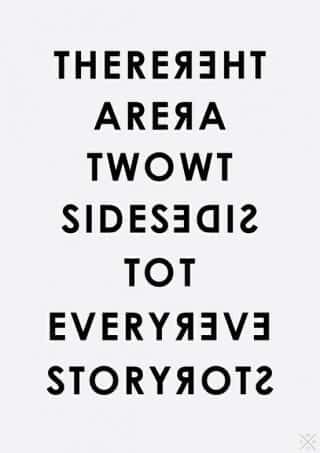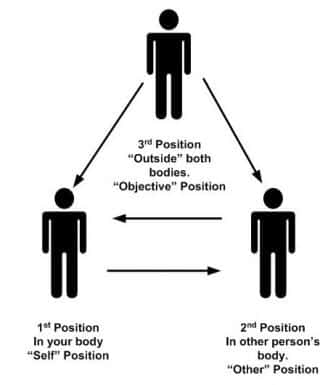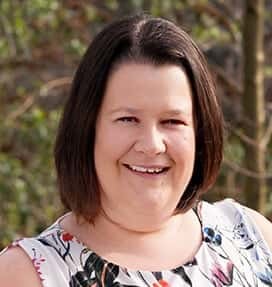Resolving conflict: how NLP can offer us some suggestions
Research has shown that in a work context managers find themselves spending a high percentage of time resolving conflict – is that you? Perhaps you have a different view or take on a problem or situation than a friend or colleague – perhaps you both passionately believe something different and therefore, on the face of it, there seems to be no meeting of minds? Maybe you get frustrated because your belief is that the other person is not being considerate of you or others? Maybe at home you have a teenager or other family member that you seem to be a logger heads with? or perhaps you can see two other people in conflict and are not sure how to help them? Perhaps sometimes conflict feels like a ‘full contact sport’ for you? Maybe you are someone who will avoid conflict at all cost because you are worried about what will happen? (even if that means you ignore it, allow it to fester or sacrifice yourself in the process).
How would it be if in a few easy steps you could increase your confidence in resolving conflict? If you could understand the nature of conflict? If next time you experienced conflict you had some tips that helped you manage the situation better or move beyond the conflict? what if you were able to help others who were in conflict? How would it be if you could recognise and take steps to resolve conflict before it started to affect you negatively?
My view is that ignoring conflict is the worst thing you can do. Conflict is defined as ‘a clash or disagreement’, ‘to be at odds with’, or ‘a state of disharmony between incompatible ideas or interests’. The ‘putting your head in the stand’ approach to conflict typically results in the conflict escalating (from a minor frustration of what is really a non-event, through to a monumental problem). The trick is the deal with it positively and proactively.
A few days ago a friend of mine shared that she had a clash with someone. It started as a frustration, she did nothing about it, it festered and got to the point where it was really p***ing her off. The other person must have felt there was something wrong so they approached her and asked if they had done something to upset her and she exploded (with raw emotion) ‘yeah, you’ve really p***ed me off!’ – she rattled off some examples where her friend had frustrated her over the previous few weeks, told her how disappointed she was in her friend and then got up and walked off (note the verbal and non-verbal communication going on here). I’m sure you will agree that this is not the most effective way to resolve the conflict (and on reflection she didn’t either). What advice would I give her? What advice would I give to the person she was in conflict with if they asked me for advice? … the challenge in resolving conflict his how you choose to handle it.
What creates conflict?
… egos? competitive tensions? someone having a bad day? pride? jealousy? power struggle? – pretty much anything can! Much conflict is born out of 2 things: poor communication and emotions …
- Poor Communication: lack of information? mis-information? poor information? no-information? On the other hand, assume for a moment you receive 100% of the information (accurate, timely etc) – what if you’re not sure how to process or make sense of it? Or perhaps some information is missing, and you put 2 and 2 together and get 10 (you add in information, you make assumptions and/or you generalise in
 order to make sense of the limited information you have) – I guess we can all relate to a time when we’ve done this in a conflict situation, right? Remember also that communication is made up of more than just words – 55% of communication is non-verbal (physiology/Body
order to make sense of the limited information you have) – I guess we can all relate to a time when we’ve done this in a conflict situation, right? Remember also that communication is made up of more than just words – 55% of communication is non-verbal (physiology/Body
language), 38% is tonality and only 7% is words. - Emotions driving the agenda: some of you may have read the Chimp Paradox by Steve Peters (a great book about the ‘chimp’ – the emotional being inside us all). The challenge is when our ‘chimp’ jumps into the driving seat – if you think back to a conflict situation you’ve been in where your emotions were driving the agenda, how success were you in resolving the conflict? I’ve seen senior executives in business allow their emotions take over and this can lead to ill-thought through communications, things being said that 100% accurate (exaggerated), ‘stakes being put in the sand’ etc – have you ever witnessed someone in a rage, who says or does something that, had the ‘red-mist’ not descended, they would not have typically said or done? over-indulging emotions in conflict situations rarely leads to a successful outcome.
6 Top Tips to Resolving Conflict
Below are some tips or things you could consider the resolve a conflict situation;
- Rapport is the basis of all communication and therefore is important in conflict resolution (‘people like people who are like them’), so it stands to reason that if you can get into rapport with the other person you increase your chances of finding a way forward. The key for NLP Practitioners is how to keep rapport when the other person keeps breaking it. If you are the receiving end of an ‘outburst’ we propose that you match tone, speed, tonality but not the angry content that you may be the recipient of – also take note of the physiology of the other person – after a while of mirroring and matching, you should be able to lead and then start to slow down, breath and introduce a calmer way of communicating.
- An outcome frame (as opposed to a blame frame of reference) also helps; if the focus of your thinking and therefore what you are saying is to find an outcome, a way forward, you are much more likely to succeed in resolving the conflict. For some reason in an argument, it’s often the case that one or both parties want to cover old ground in order to be able to apportion blame – you have to ask yourself for what purpose do you want to blame? Is this really going to get you closer to resolution or the outcome you desire? Adopt a problem solving approach (many of us like to think of ourselves at great problem solvers or solutions focused people) use the skills you have in this area and apply them to conflict resolution.
- Actively Listening: if we’re honest, many of us know we could work at being a better listener. What tends to happen is that we listen in order to be able to respond (often with our emotions) and this means that we often miss critical information the other person is sharing. As we know from a previous blog the mind naturally distorts, generalising and deletes information. Bearing in mind that much conflict is born out of communication and emotions, keeping your focus of listening or perhaps trying to understand or learn something from the other person may help. A fun tip to improve your listening skills, that I remember learning on a course years ago is start your next sentence with a word that starts with the same letter as the first letter of the last word the person your are talking to finished on (clearly do this in your own head, but it does encourage you to listen properly).
- Understand the positive intention: I believe that people operate from a position of best intent. This may not be obvious at first, because people in conflict often drown in detail – must of the argument will be in the detail. What is the higher positive intention on both sides of the argument? What is it that each party is after? Respect? Love? Security? When you understand this you will be much better positioned to form a strategy to resolve the conflict.
- Step into the other person’s shoes: in NLP we use the technique ‘Perceptual Positions’
 which encourages us to look at a problem or conflict from a number of angles, one being from ‘2nd position’ which is from the other person’s point of view. Some people are very good at considering the needs and concerns of others. For a ‘self-centred’ person, stepping into someone else’s shoes will be a real, but very worthy challenge. When using Perceptional Positions with a client, I firstly get them to talk about the conflict or problem from their own point of view (known as 1st position, where they are fully associated into the problem – what is going on for you? what are you seeing, hearing and feeling? Where is your focus?). I get them to ‘break state’ (which essentially means to step out of that role) and then get them to walk to a different part of the room and get into ‘character’ imagining they were the other person (2nd position) – what would they be seeing, hearing, thinking, feeling etc what is going on for them as the other person? – get the story really rolling and keep associated (including using sensory based descriptions). When you do this in 2nd position new insights appear – you’re starting to see things form another point of view. This technique also plays right into one of the NLP presuppositions ‘the map is not the territory’ – the map is our interpretation of the territory based on our view of it – the information we have, what we see, hear and feel (and sometimes we don’t get it right!)
which encourages us to look at a problem or conflict from a number of angles, one being from ‘2nd position’ which is from the other person’s point of view. Some people are very good at considering the needs and concerns of others. For a ‘self-centred’ person, stepping into someone else’s shoes will be a real, but very worthy challenge. When using Perceptional Positions with a client, I firstly get them to talk about the conflict or problem from their own point of view (known as 1st position, where they are fully associated into the problem – what is going on for you? what are you seeing, hearing and feeling? Where is your focus?). I get them to ‘break state’ (which essentially means to step out of that role) and then get them to walk to a different part of the room and get into ‘character’ imagining they were the other person (2nd position) – what would they be seeing, hearing, thinking, feeling etc what is going on for them as the other person? – get the story really rolling and keep associated (including using sensory based descriptions). When you do this in 2nd position new insights appear – you’re starting to see things form another point of view. This technique also plays right into one of the NLP presuppositions ‘the map is not the territory’ – the map is our interpretation of the territory based on our view of it – the information we have, what we see, hear and feel (and sometimes we don’t get it right!) - What is the independent view on this? – within perceptual positions, this know as the ‘3rd position’ – you take on the role of a 3rd, independent person, detached, observing the interactions between the 2 people – much like a coach might. This 3rd position encourages impartial insight – a bit like the ‘wise old owl’ or if you were watching the argument play out of the TV. Playing through the interactions between the 2 people as a bystander often brings about a new perspective that is grounded in neither of the (sometimes passionate) views of either party.
What if you were able to share these tips with someone else? How about is we taught these to children – how great would it be to be able to help a child have a new point of view on a situation? How about if you were able use them to find a compromise in a conflict you find yourself in? What if you became a better more flexible communicator?
____________________________________________________________________
Laura Evans is a certified international Trainer of NLP who runs NLP training in the UK and has a number of coaching clients she works with in order to help them achieve personal change so that they can achieve their dreams and goals. Laura can be contacted by emailing [email protected]


